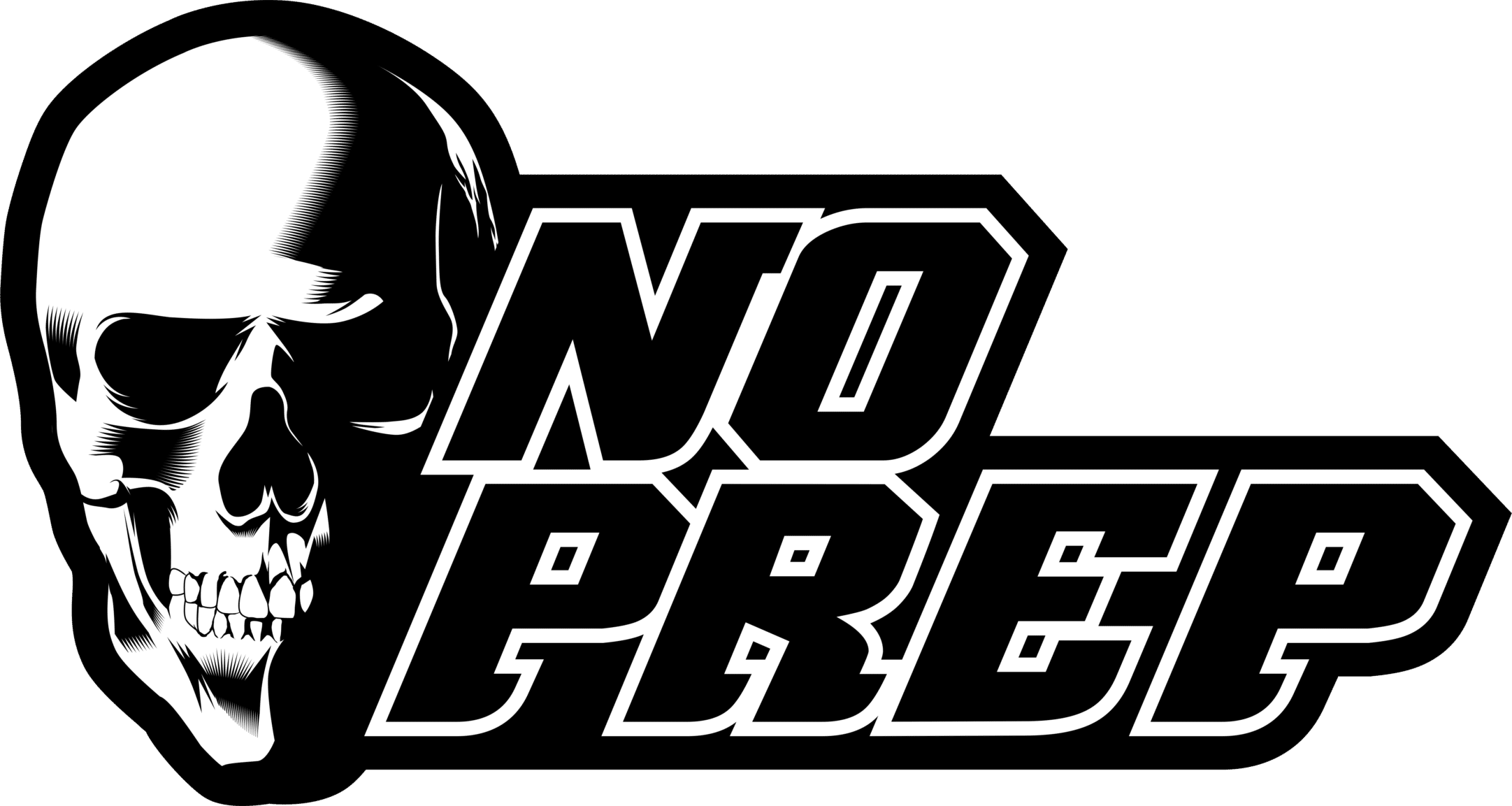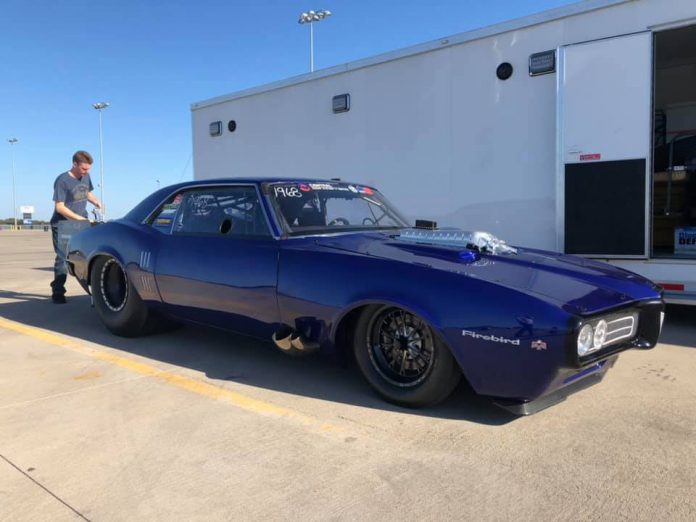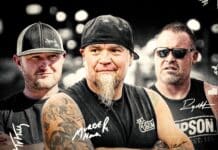In the world of drag racing, you’d be hard pressed to find a current stage with more momentum surrounding it than no prep. With the speed, sound, drama, and variety of cars, it truly is a sensory sport to the extreme. And nowhere is all of that on display more than the hit TV show Street Outlaws: No Prep Kings. Combining huge payouts, larger than life personalities, endless story lines and controversy, the Street Outlaws spin off series has reinvigorated a passion for the sport and brought it back into the mainstream.
But what all goes on when the cameras are off, when the spectator gates are closed, and nobody is watching the drivers’ every move? Exactly how much effort is put in by each team for just a two-hour episode?
I went in search of these answers, traveling with driver Robin Roberts and his team for the season 3 finale in Ennis, Texas. I wanted a behind-the-scenes look into the world of Discovery Channel’s reality series. And in doing so, I quickly learned that while it may seem like all glitz and glamour on television, the reality is much different.
As Roberts says, “If people knew everything that we have to do to come race, nobody would wanna do it.”
Part 1: Preparation
It’s 3:40 a.m. on Wednesday morning, and my alarm is ringing. Filming doesn’t begin for another two days, but we have to be on the road by six, and I’ve got an hour drive ahead of me before I join the team just north of Kansas City.
When I arrive at the shop, there are three crew members already pulling the rig out. I load up my bags, and we’re on the road five minutes early. Already running low on sleep and high on caffeine, we trek south across the endless plains of Kansas.
We cross into Oklahoma at 9:55, and stop for fuel a little while later in Oklahoma City. We’re in the heart of 405 country, but it’s doubtful many of them are currently here. Like us, they’re already on their way to Texas. We are greeted in the Lone Star State soon after with road construction and heavy traffic.
At 4:00, exactly ten hours after leaving the shop, we arrive at Xtreme Raceway Park in Ferris, Texas. Robin is already at the track when we pull in. The Chairman and CEO of Central Power Systems & Services, he has had business meetings in Dallas for the past two days. The plan for this evening is a late night of private Team 405 testing in preparation for the main event this weekend. Ryan Martin, Jeff Lutz, and Chris Poncia are already here. We’ll soon be joined by the likes of Big Chief, Murder Nova, Daddy Dave, Monza, Dominator, and Chuck 55. Although he lives outside Kansas City, Robin has been friends with Ryan and Chief for many years, and has agreed to be a part of their group for this season.
The team unloads the 1968 Firebird, named High Voltage, in preparation for our first pass of the evening. The car features top of the line equipment from front to back. Sitting on a chassis built by Terry Murphy, High Voltage is powered by a ProLine 481x motor with twin 98 mm turbos. The transmission and converter are from Mark Micke at M&M Transmission. It has a Visner billet intake and throttle body controlled by a FuelTech FT600, twin billet Atomizer 700’s, a Quick Performance billet 3rd member, and QuarterMax shocks and struts. No expense has been spared in creating an elite no prep car.
It’s here where I learn that the work on the Firebird has actually been going on for weeks. After returning home from the previous No Prep Kings event in Florida, the crew has to change the rods, and then find numerous broken gears that are typically difficult to replace. A call to Quick Performance and an emergency trip to their shop in Iowa ensue, and it appears everything is back in order. Then two days before we’re set to leave, there’s more bad news.
“Ryan [Martin] called me Monday night about seven and asked me if I had the motor all back together,” says crew chief Allen Bruflodt. “I said, ‘Yeah, it’s all back together, it’s ready to go.’ He said, ‘Well, you need to go look at the heads.’ The set that were on his motor were cracked, and it was a brand new fresh engine from ProLine. So they called ProLine and told them what they found. ProLine started looking at the heads, and every single cylinder head that ProLine had on the shelf was cracked. So me and my boy jump in the truck, run over to Robin’s, pull the top of the intake off, start looking, and sure as shit, it’s cracked.”
Allen says the crack is on the #3 cylinder intake runner, where a stud runs through. Short on time and options, he used thread sealer on the stud and put it all back together. For the time being, it was fixed, and when he fired it up that night, it ran better than it did before. Allen’s hope is that it stays that way through tonight’s testing, and for the finale.
“We’re gonna run it tonight and keep an eye on it,” Bruflodt says. “I brought a bore scope with me, so we can see if that crack is getting bigger. If it does get bigger, tomorrow we’ll have a set of heads delivered to Ennis. If we feel like it’s going to be an issue before the race, tomorrow night we’ll put a new set of heads on it.”
Even with all the work put in before leaving home, the team cannot simply unload the car and make a pass. It immediately goes up on the Pro Jacks, and the front clip is removed. The team looks carefully over the entire car, checking for anything that might have moved or come loose on the long drive down. The wheelie bars are attached. They fire up the car and spool the turbos, building a little heat in the transmission and torque converter. Finally, while it cools off, they do a final check on everything, add fuel, and check tire pressure. The hood and front clip go back on, the push bar and golf cart are attached, and we’re ready to make a pass.
Part 2: Testing
Ryan Martin is the first driver to make a test pass, then it’s our turn. After a quick last-second check of the tire pressure, Robin starts the car and pulls forward. ProLine tuning expert Jamie Miller is on the property, and he helps Allen line the Firebird up. The first test pass is only going to be to half-track, and Robin makes a very solid hit to the 330. Testing is officially off to a good start.
Back in the pits, crew member Jeremy Raney begins adjusting the valve springs while Allen looks over the data from the run. Bags of ice are dumped into the transmission cooler, and fans are placed atop the engine in an effort to cool the car down. One of the nice things about testing is there is no schedule to follow. The crew can stop at any time to go watch the rest of Team 405 make their test passes, then come back and continue working.
Optimistic after a good first hit, we head back for pass number two. Unfortunately, as happens so often in this sport, things don’t go as planned. After the burnout, it quickly becomes clear that something isn’t quite right, and the pass is nowhere close to what they’re looking for. They find out a nut has come off the line lock, preventing Robin from making a clean run. It’s nothing major, however, and everyone quickly gets ready for another try.
It’s dark by the time we pull up for our third pass, and the warm Texas weather has cooled off considerably. Conditions are ideal for this run, and Robin makes the most of it. Watching from the starting line, we can all tell he’s absolutely flying, but it’s not until Allen receives the time slip from the tower that we understand just how quick it was. It’s a new personal best elapsed time for Robin, and while I’m not at liberty to divulge what it was, I can say with certainty that fans would be in shock. We’re all abuzz as we drive the golf cart down to the end of the track to greet our driver. Robin is out of the car, grinning already, knowing we were coming with good news. Allen hands him the slip, and it’s hugs and fist bumps all around. We know this is a car that can win the event.
“The neat part is, once you’ve made some fast passes, and you get comfortable in the car, you can tell what a fast pass is,” says Roberts. “For me, I know that car is fast when I feel it dangling the front tires to the 1/8. And in that pass, it dangled ‘em the whole way. I just knew it was going to be a good run, and the time slip bore that out.”
Spirits are high as the crew cools the car off and goes over everything again. The plan is to turn it up even more on the next pass. But as Robin warned me earlier, drag racing is like a roller coaster, where highs and lows are a normal experience. We’d already seen that occur earlier this evening, and it was a trend that would continue. As Robin prepares for his fourth pass, it is apparent once again that something isn’t right. This time the issues are two-fold: the trans-brake isn’t working correctly, blowing a fuse in the process; and a setting was accidentally changed on the dump valve. Robin shuts the car off, and we push it back to the pits.
The joy from the previous run is gone, and the team is all business as they search for the source of these problems before making our final run of the night. In four passes, we’d experienced two exceptional runs and two mechanical failures. So it’s no surprise when the fifth and final pass offers a bit of both. As Robin attempts to stage, the car still won’t bump in. He gently rolls the car in and lights both bulbs, then begins to build boost as the light turns green. It’s a good, straight pass, one that will win a lot of races. But the staging issue negates all that, and it’s a problem that must be fixed before race day. Robin knows it’s imperative that the team stay focused, and not get caught up in the emotional roller coaster.
“What I’ve learned in business is, you’ve gotta get your people’s mind right around you,” Roberts says. “When you do great, you can’t let that get in your head. And when you do awful, you can’t let it hold you back. You’ve gotta get over it quickly, and move on. That’s what I’ve tried to drive into our entire crew. You can’t allow yourself to get caught up in the moment of euphoria, and you can’t allow yourself to get down when you’re trying to keep moving forward.”
It’s been a long day, and at two in the morning, we all finally have a moment to stop and eat. Robert Brown, a friend of one of the crew members, has graciously driven all the way from Arizona and offered to feed us this weekend. The aroma of spaghetti and three-meat sauce brings other teams like Murder Nova, Monza, and Dominator over to share in the meal. It’s a great way to end a night that was full of ups and downs.
While the rest of the crew stays at the track, Robin, Jeremy and I head to our hotel. It’s nearly 4 a.m. when we arrive, and the front desk has marked us down as a no-show. Thankfully, the attendant gets us set up with rooms again, and because it’s so late, doesn’t charge us for the first night. After some quick showers, we get to bed at 4:30. We’ve been up for 25 hours straight, and it’s only day one.





